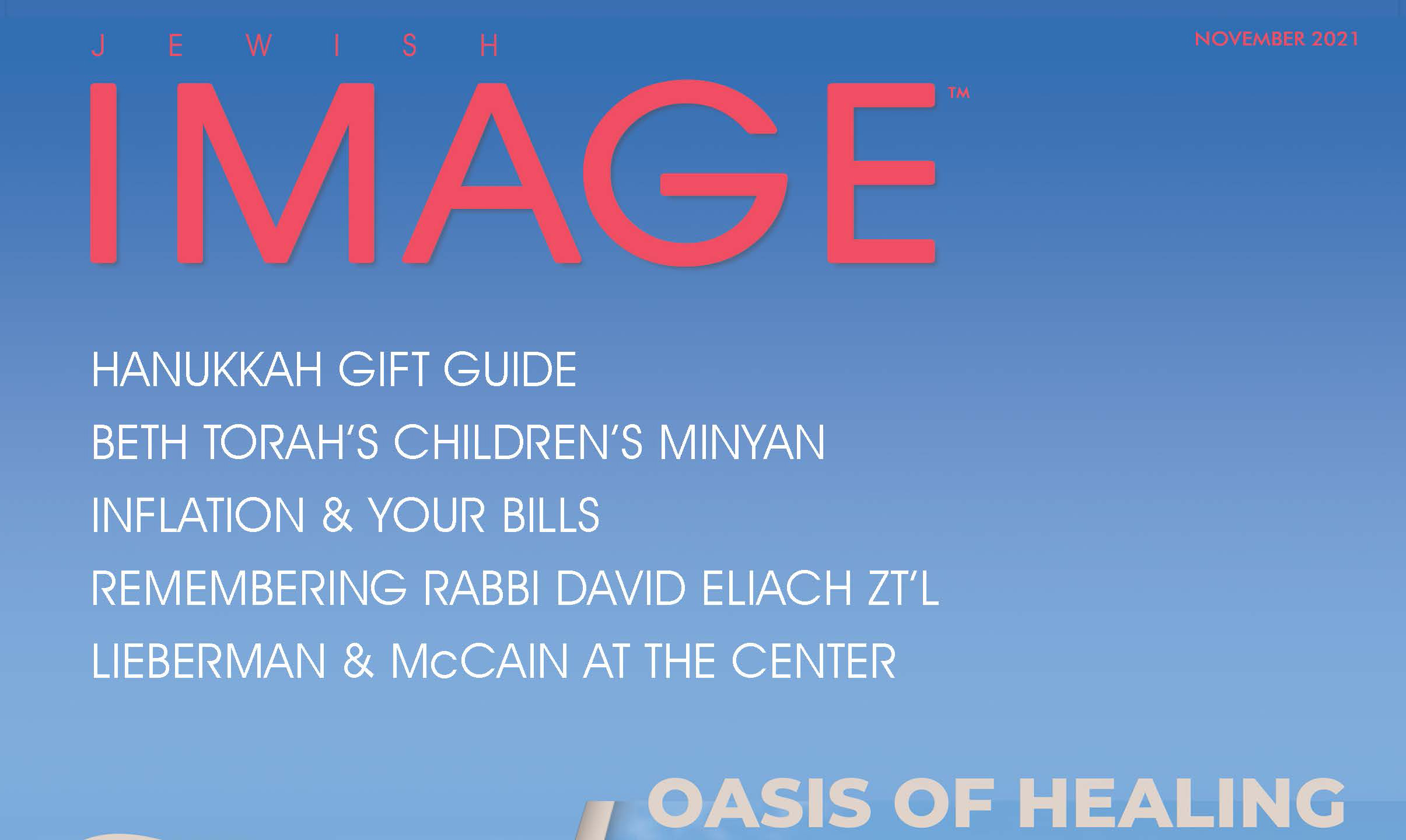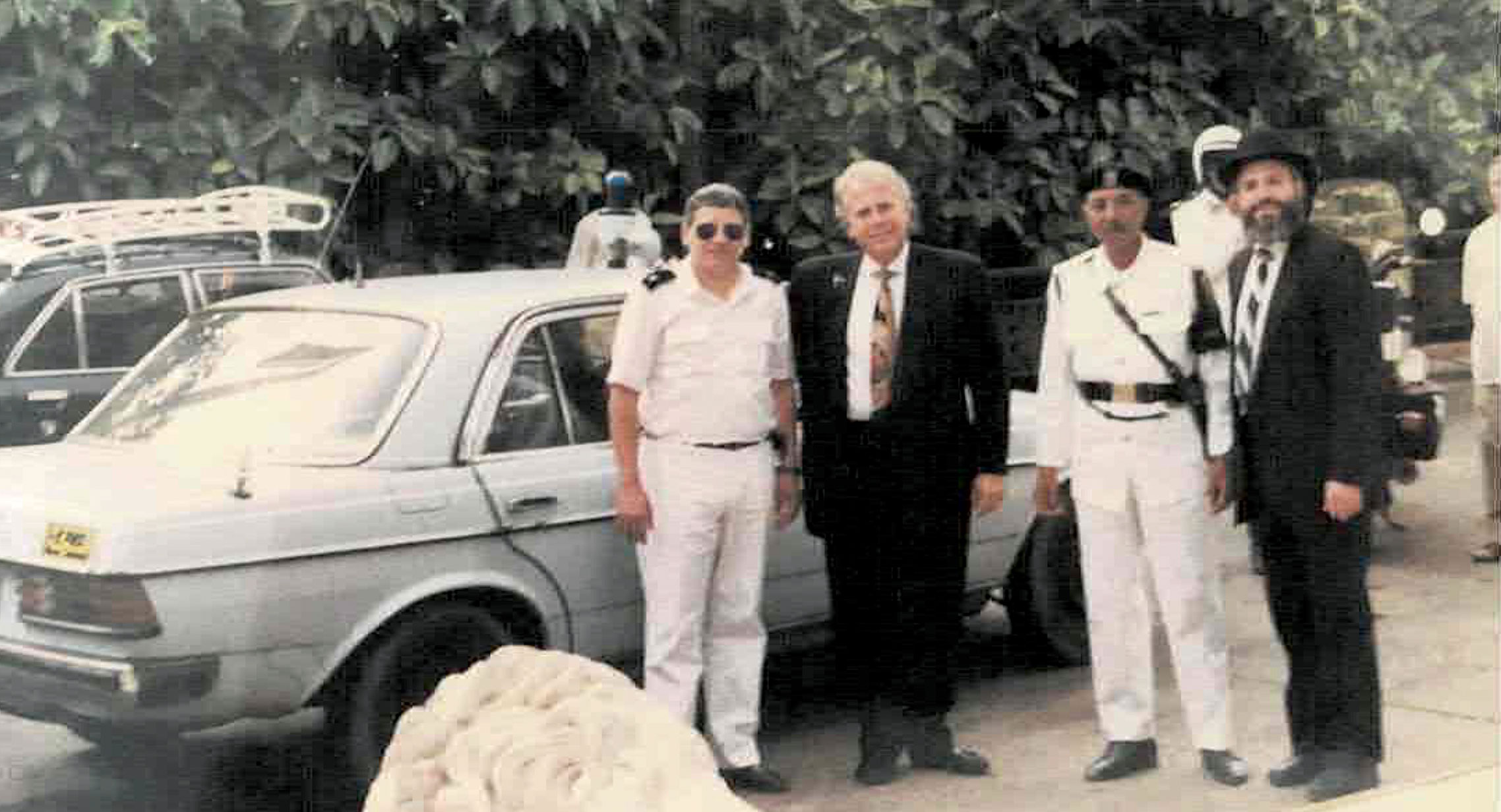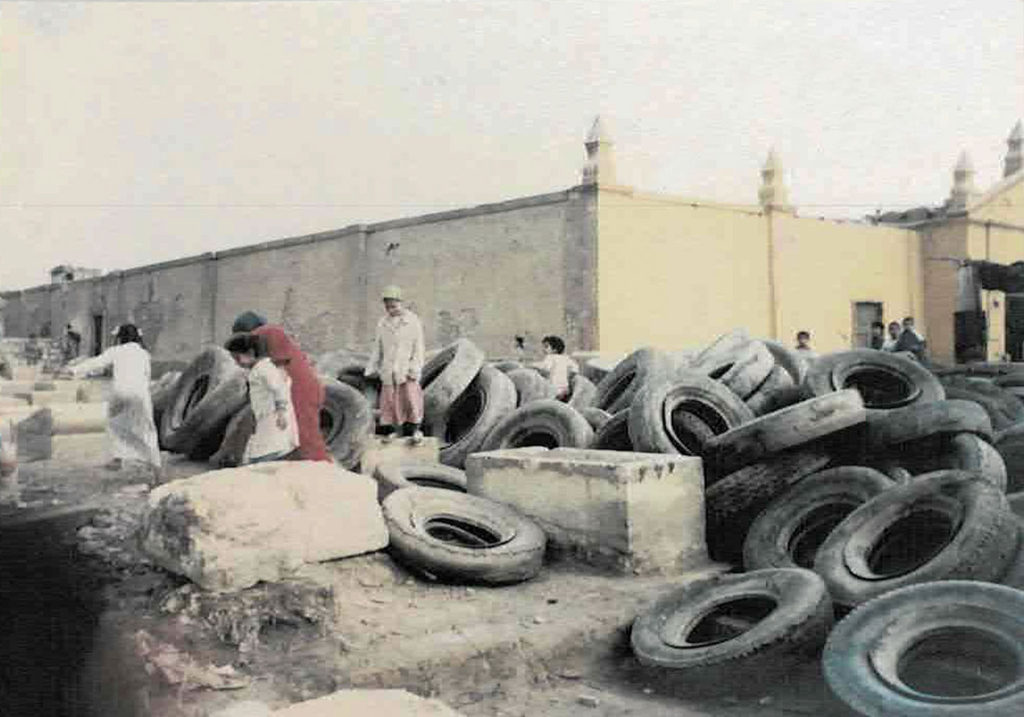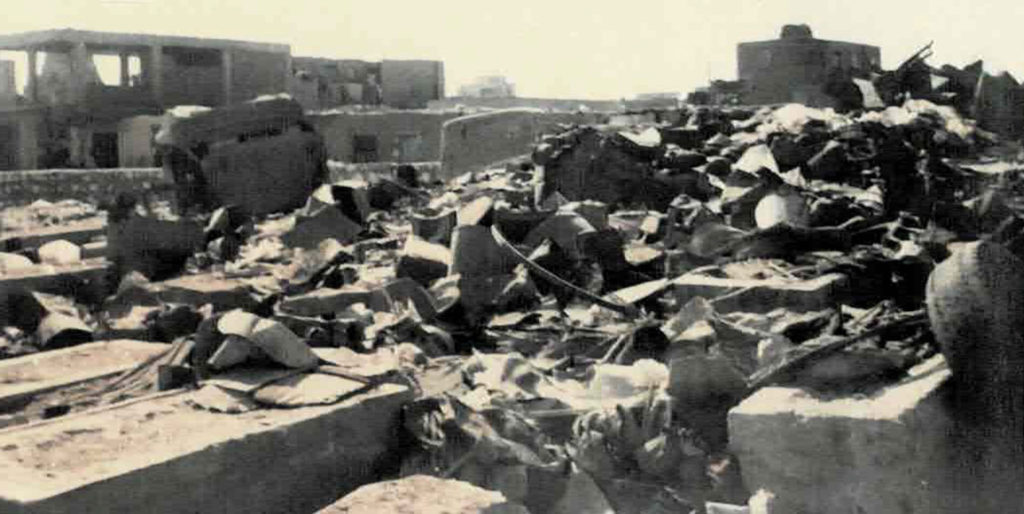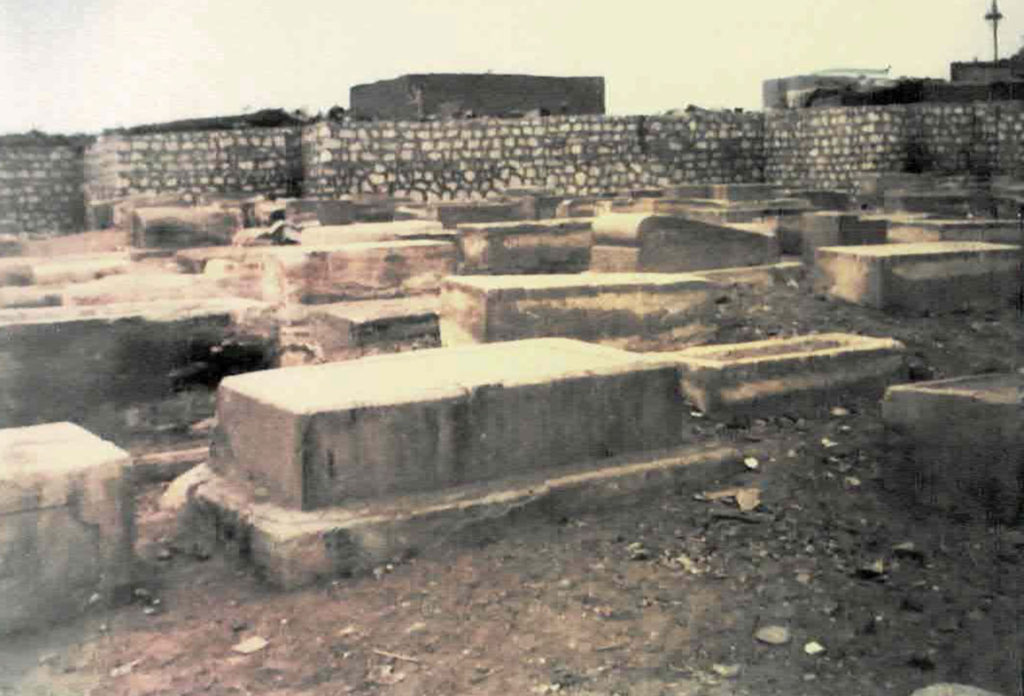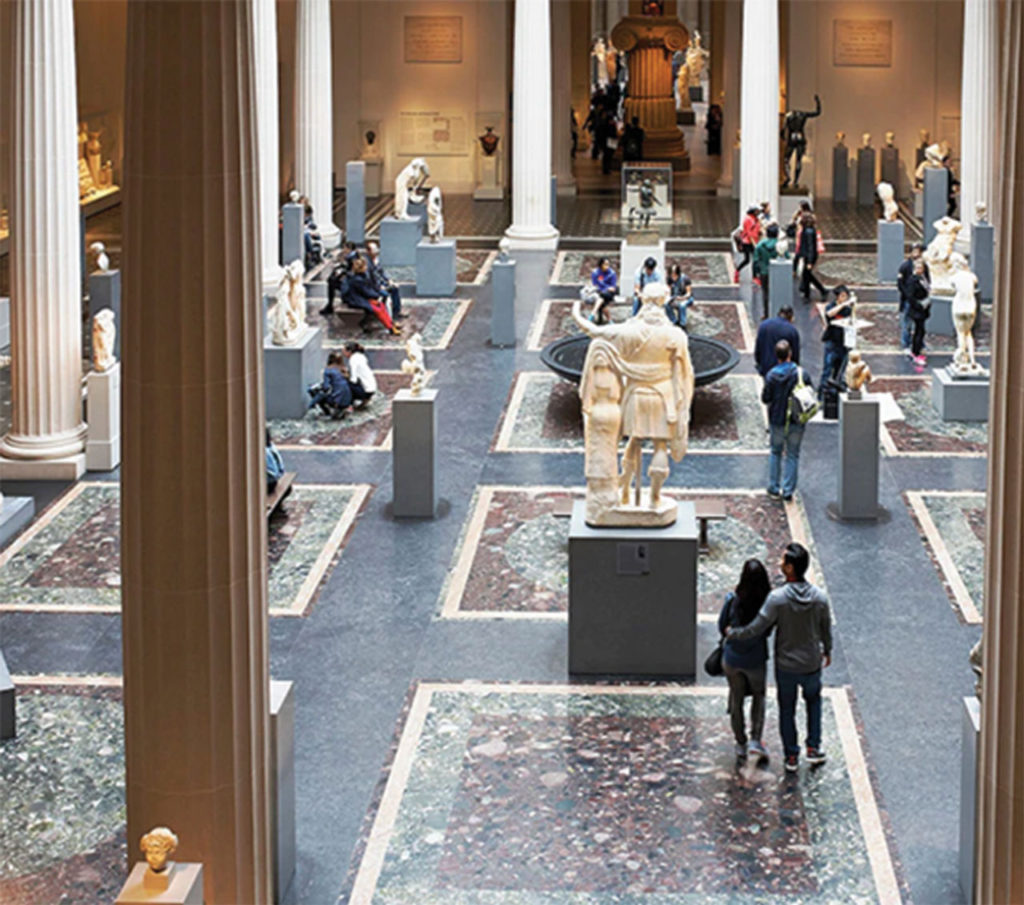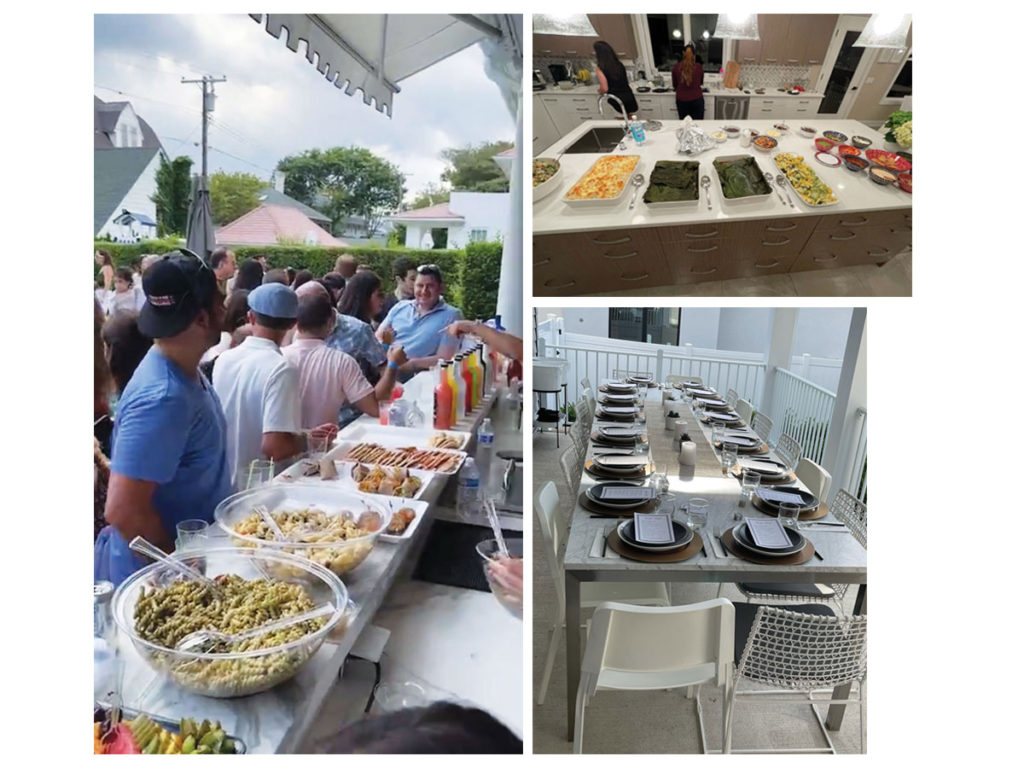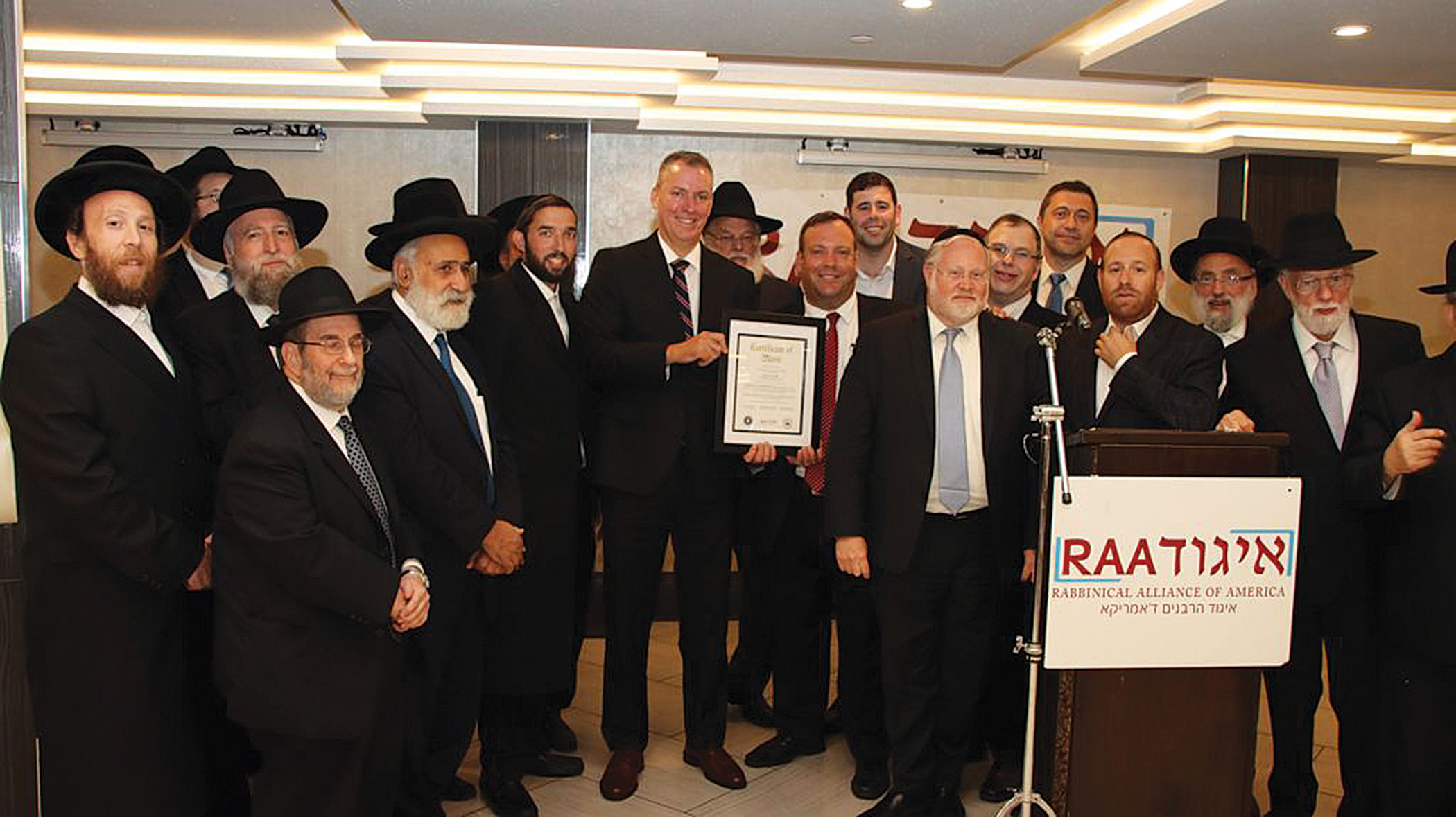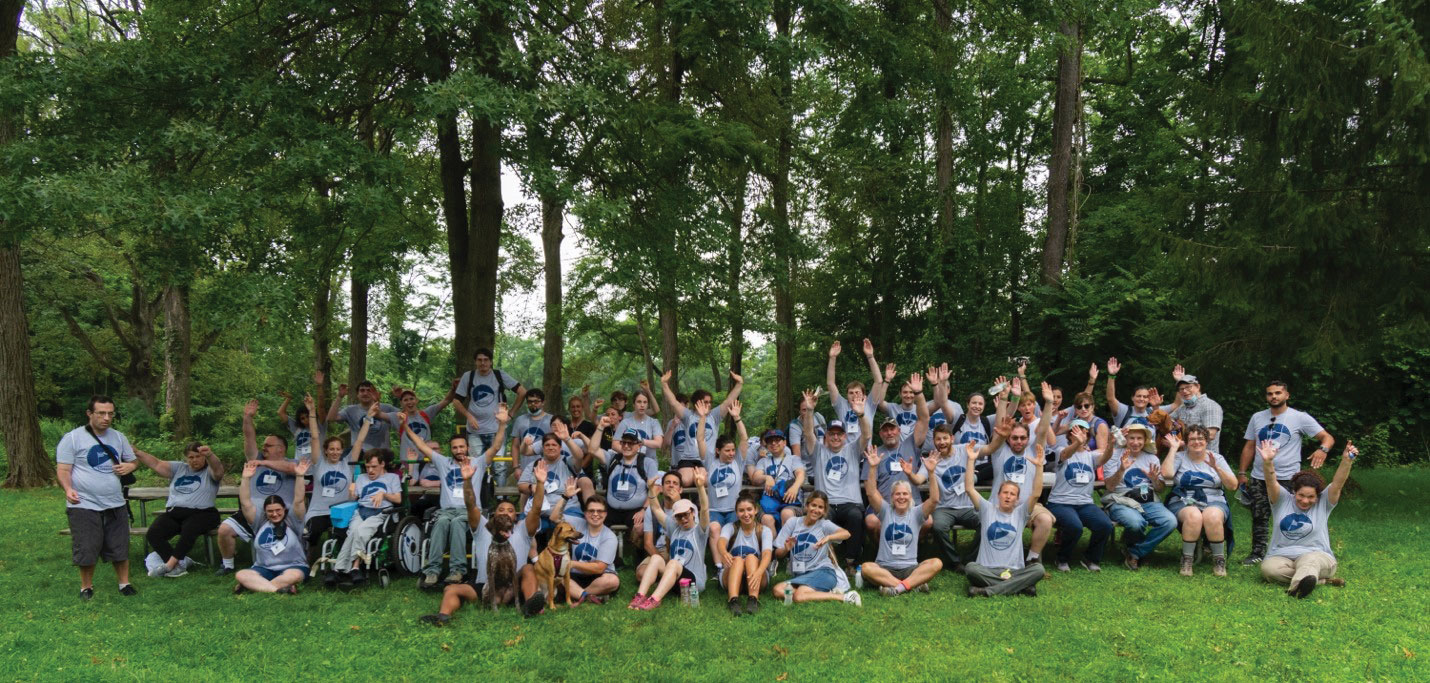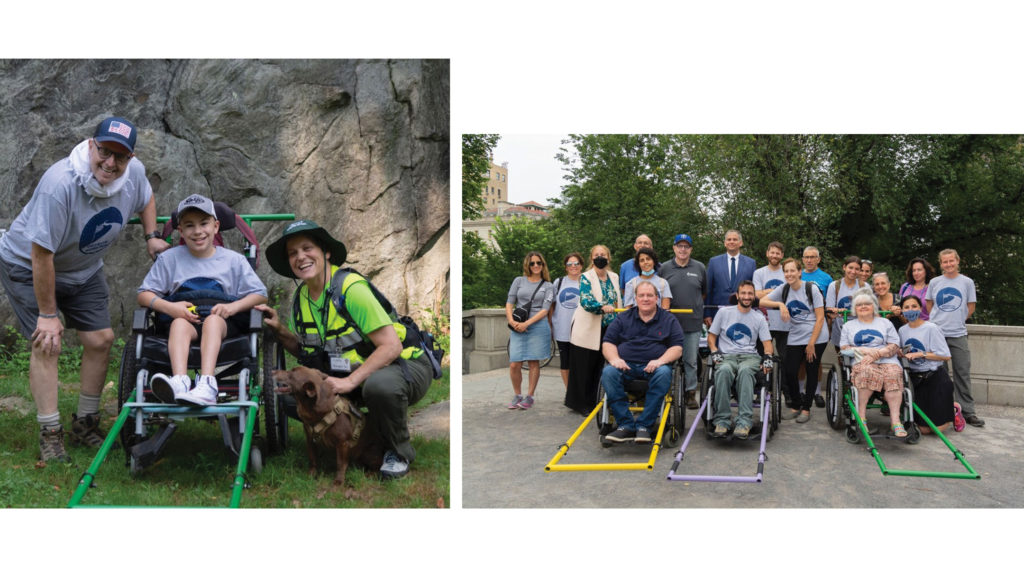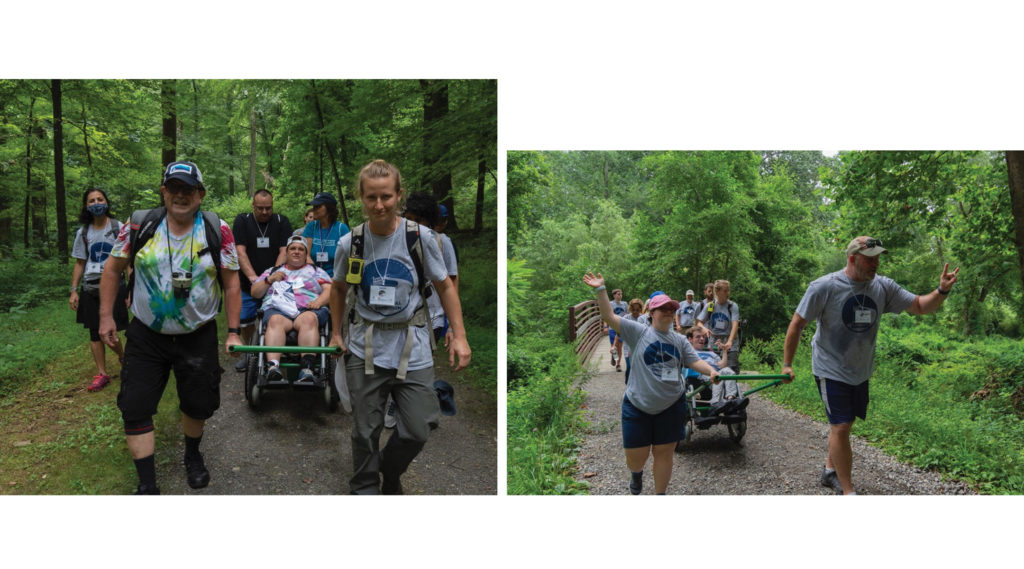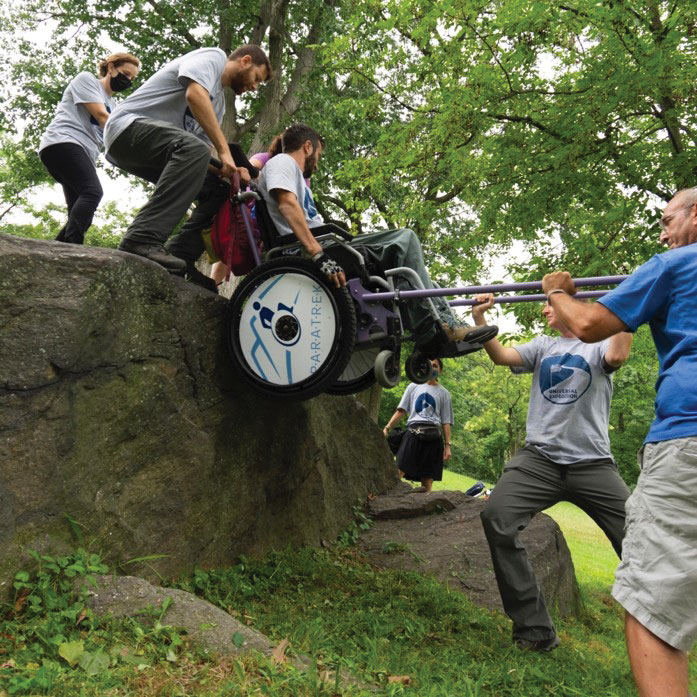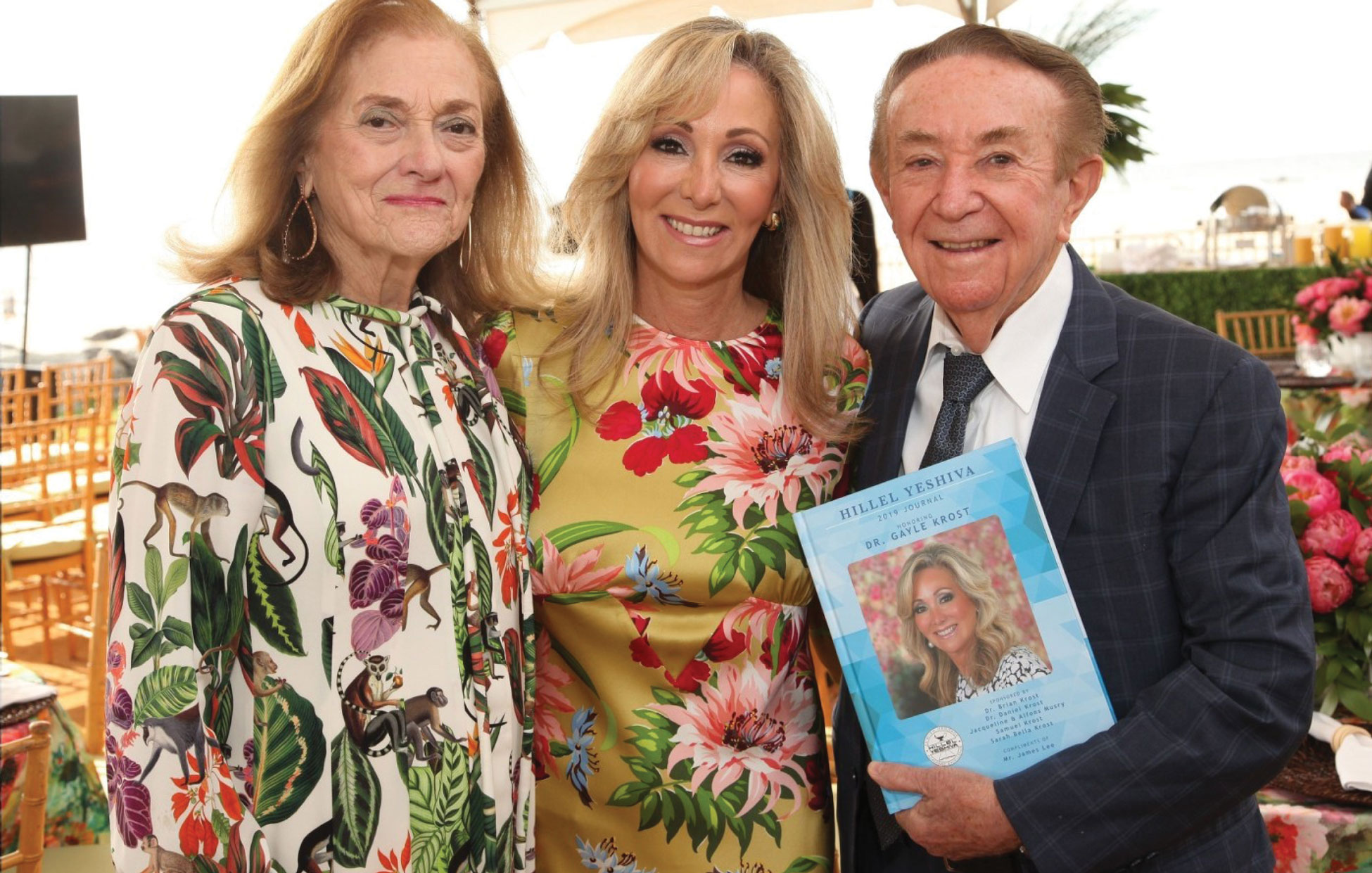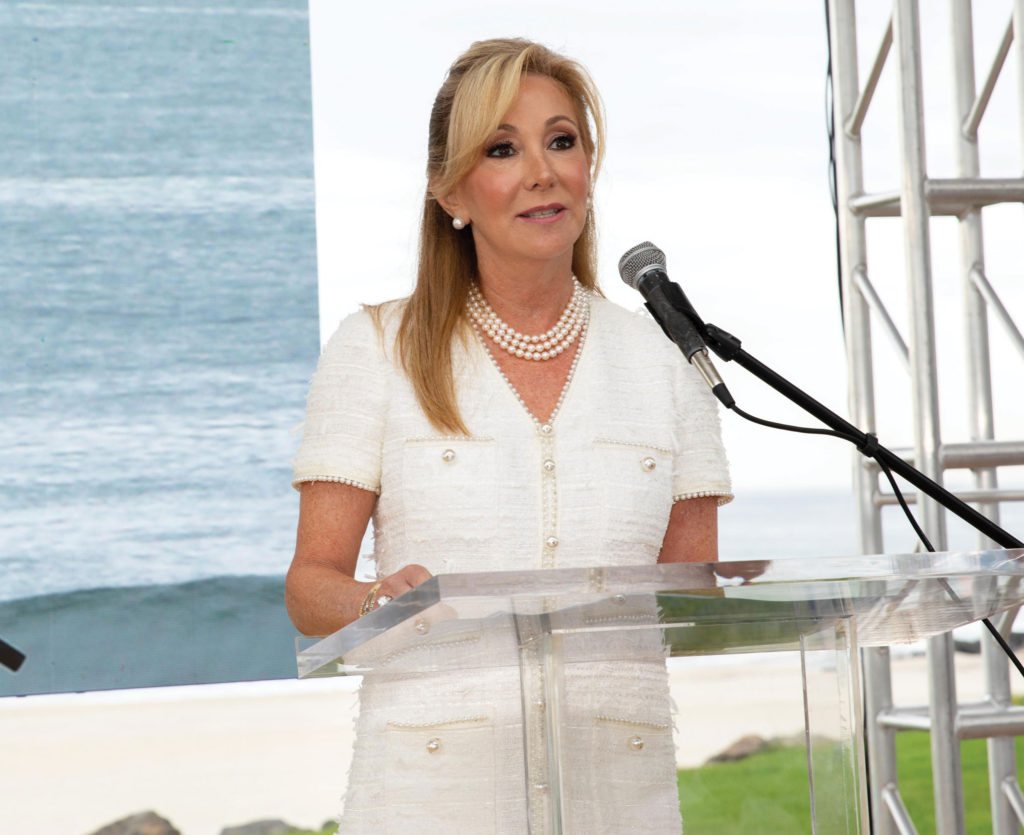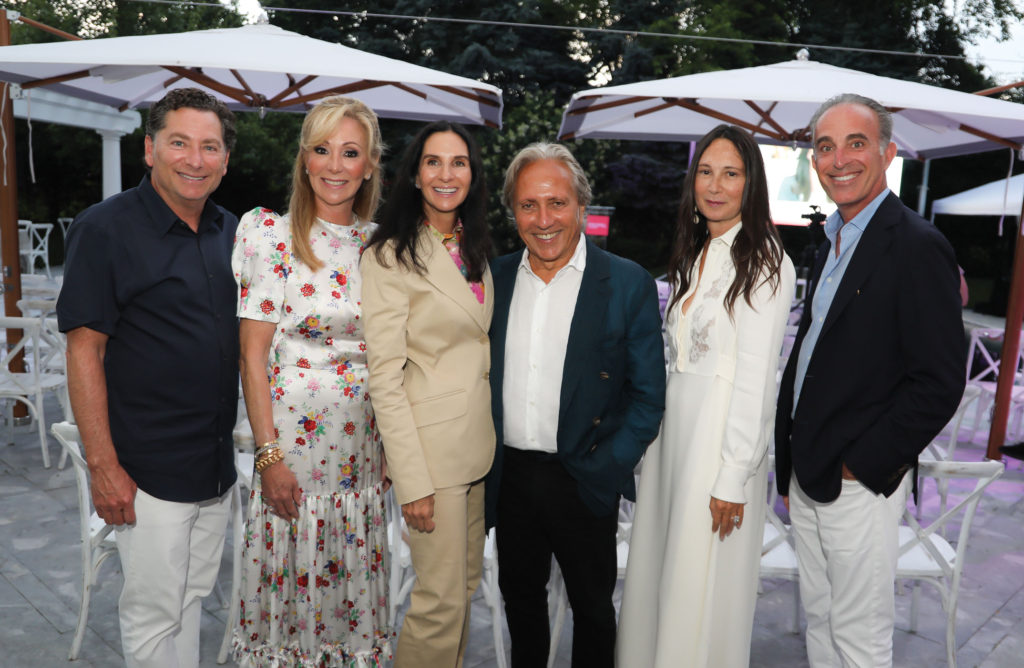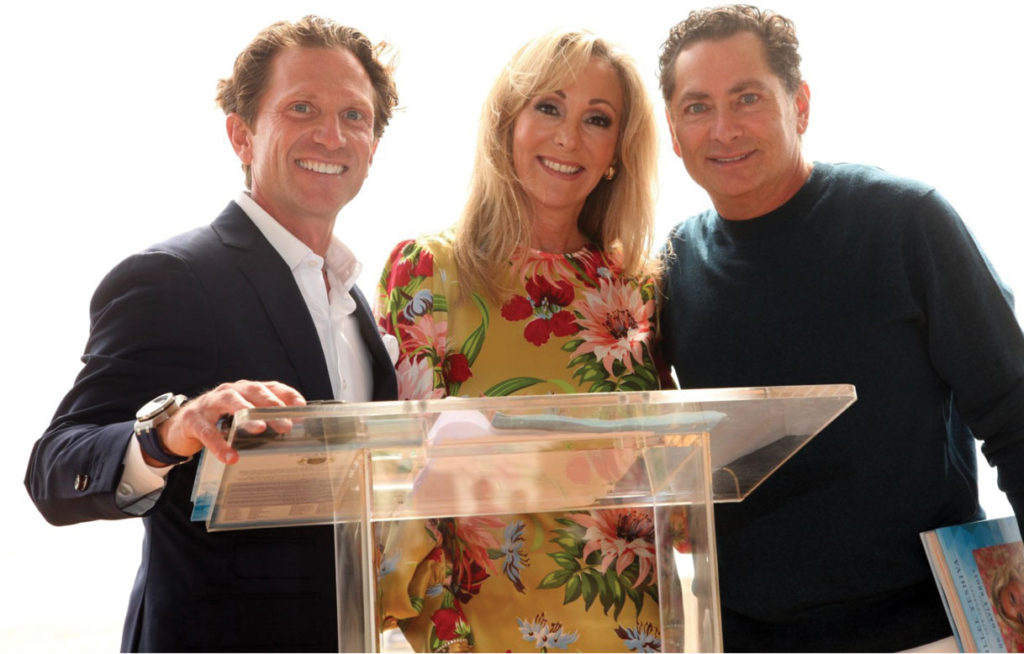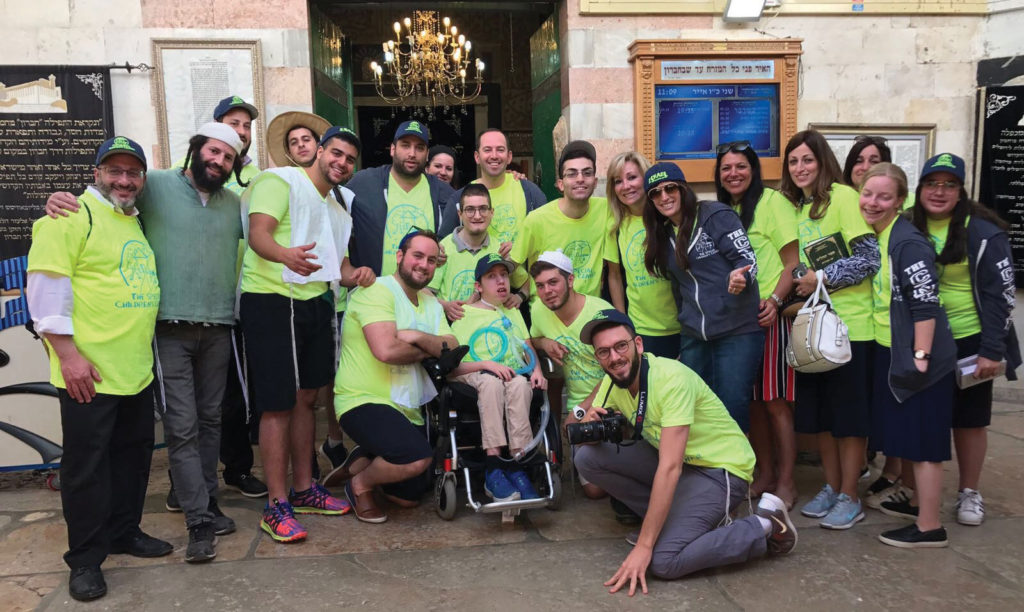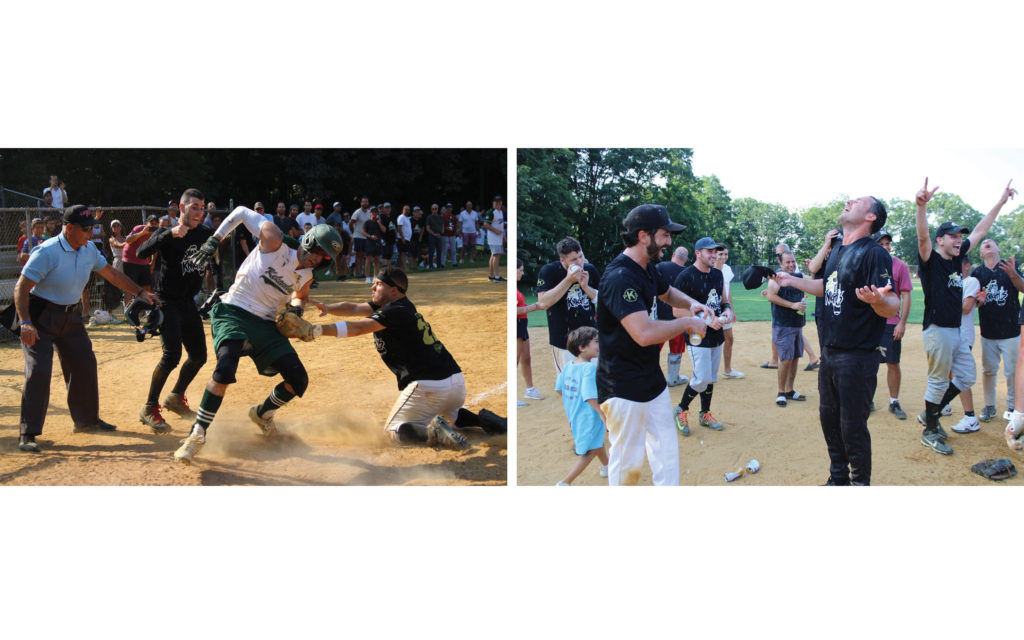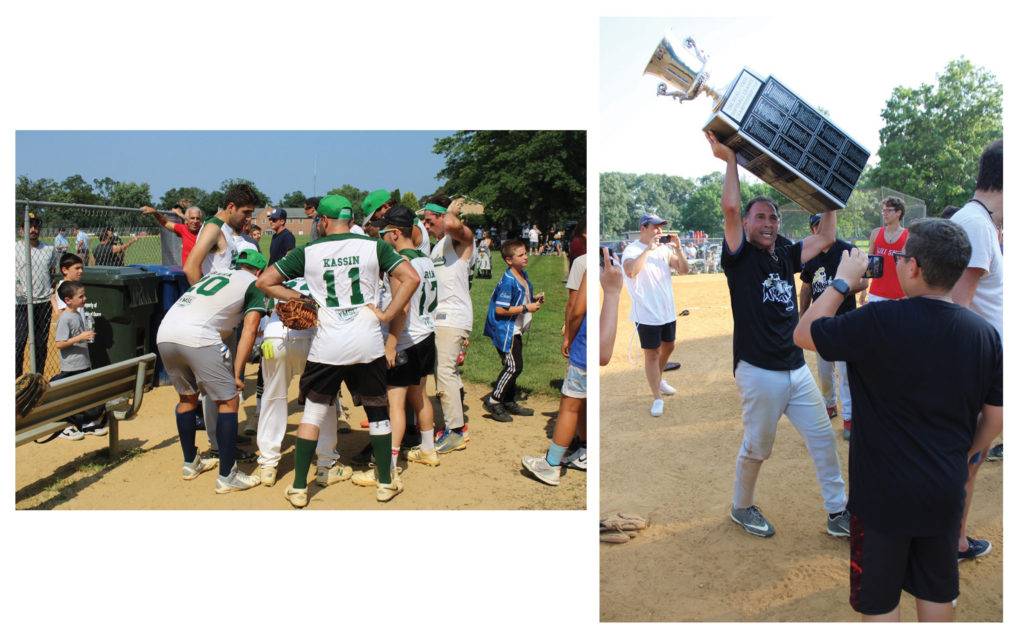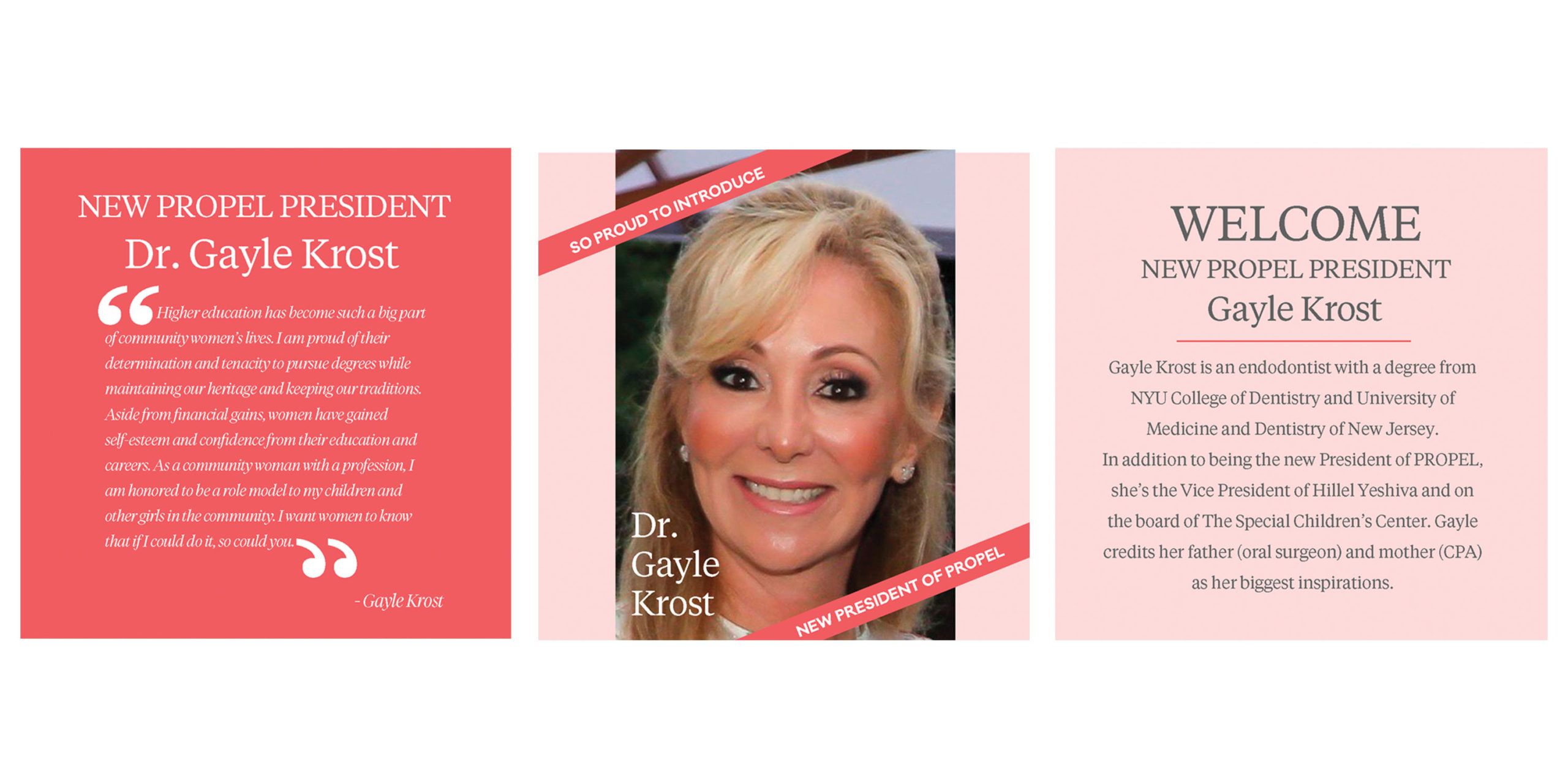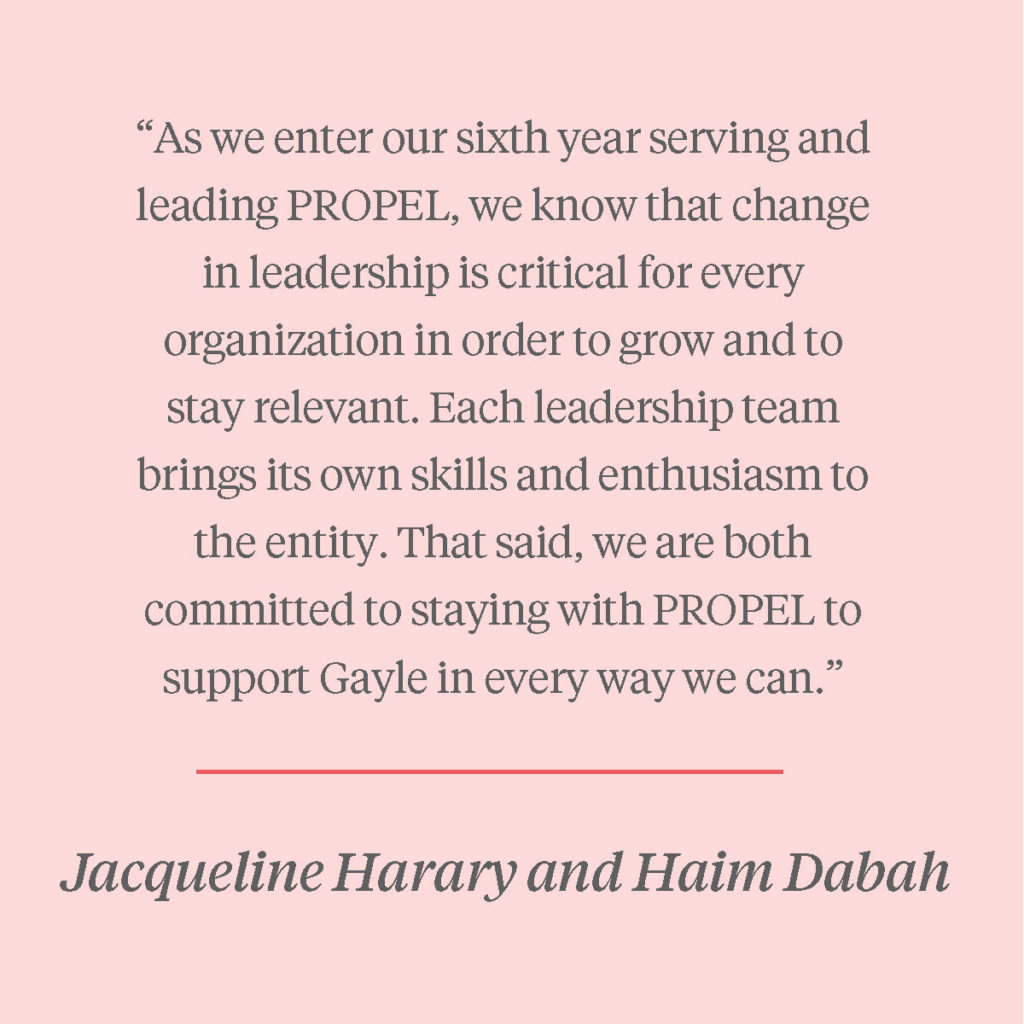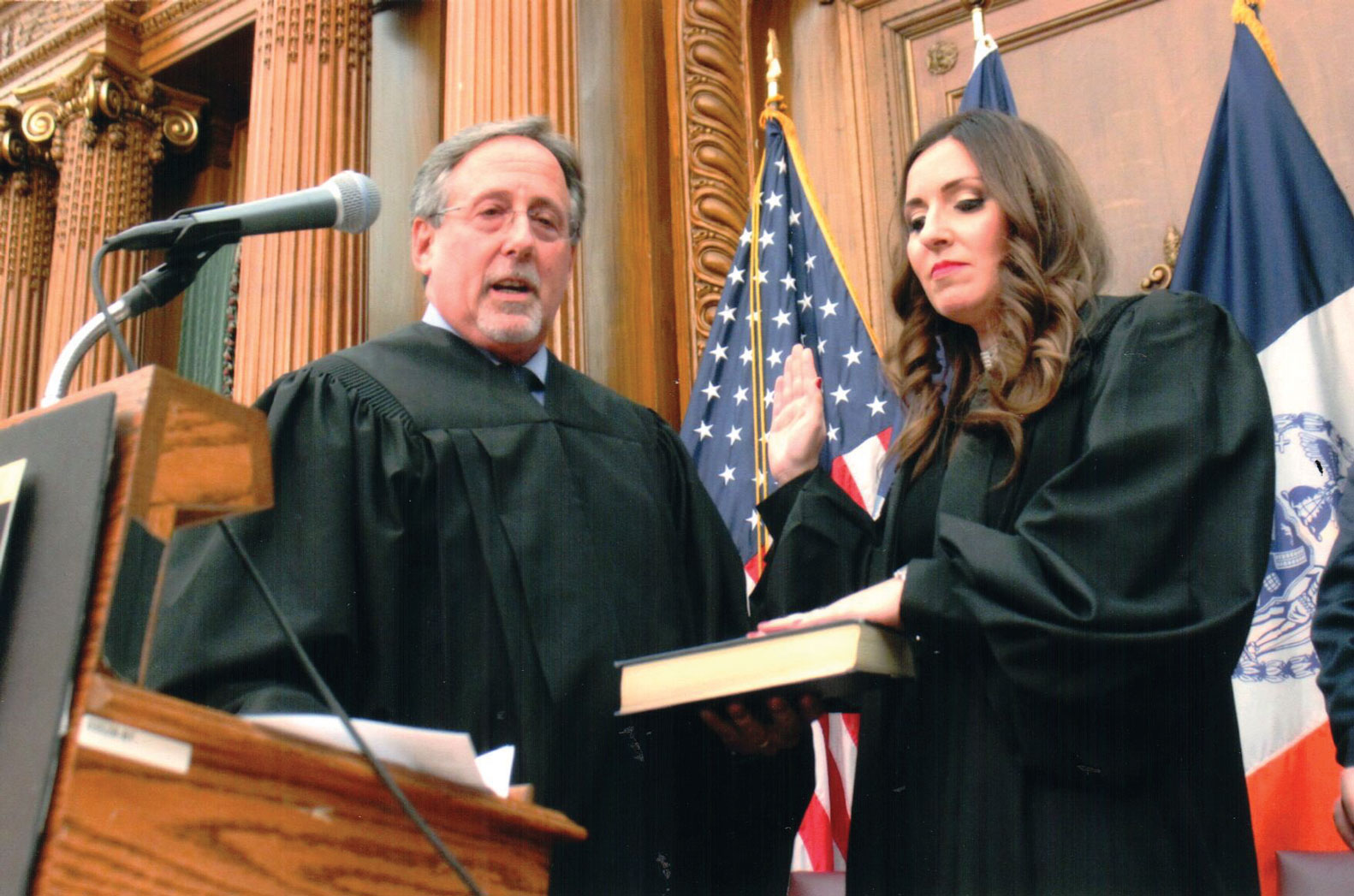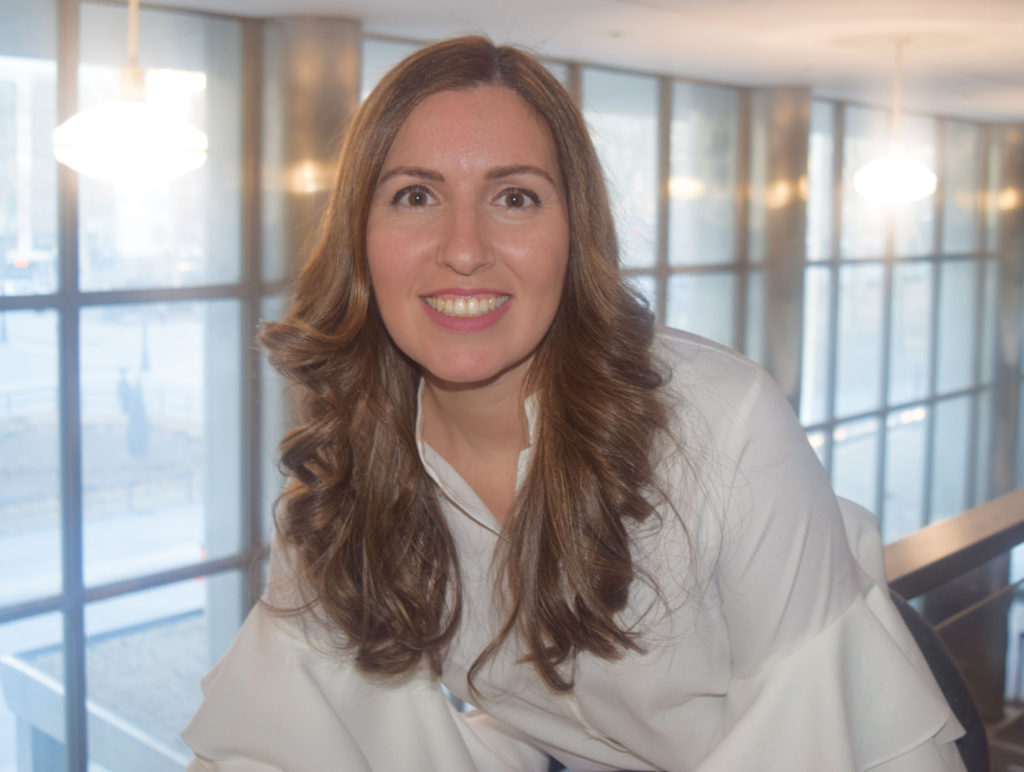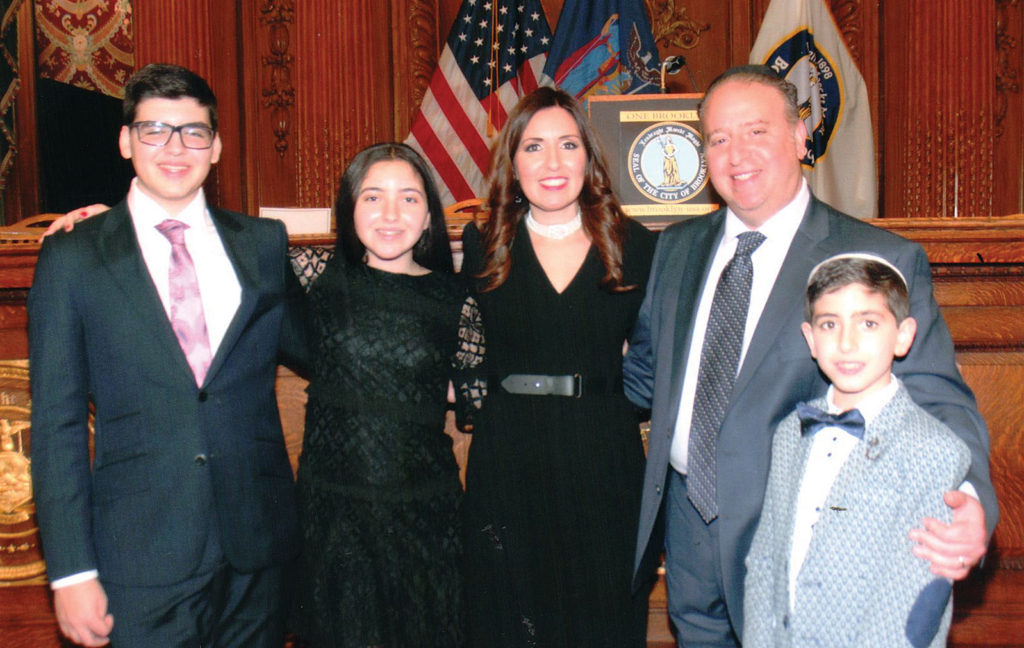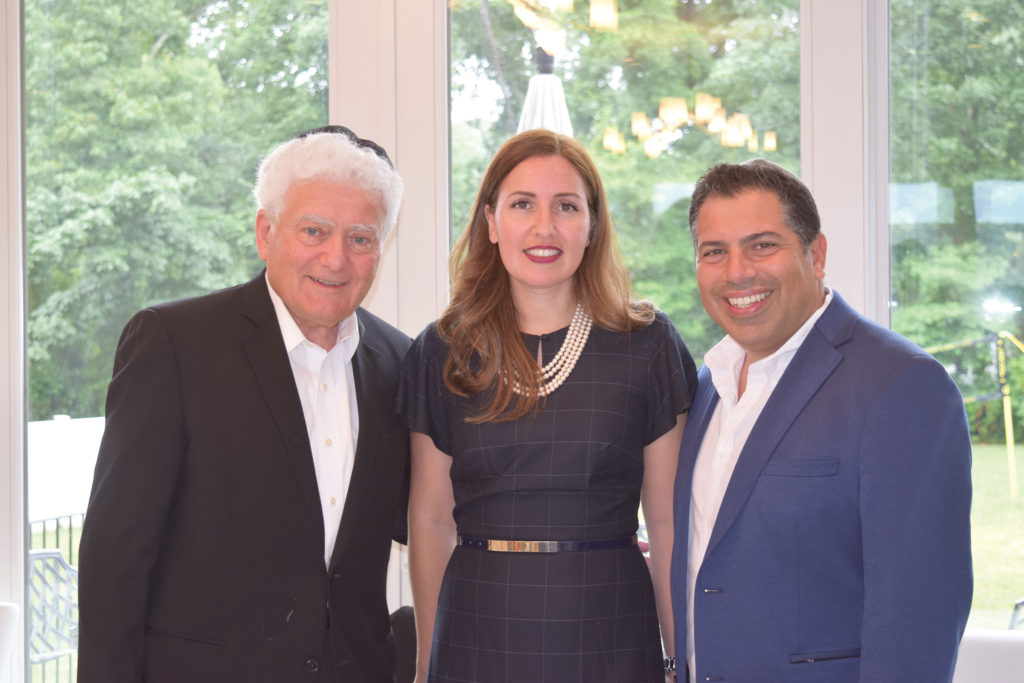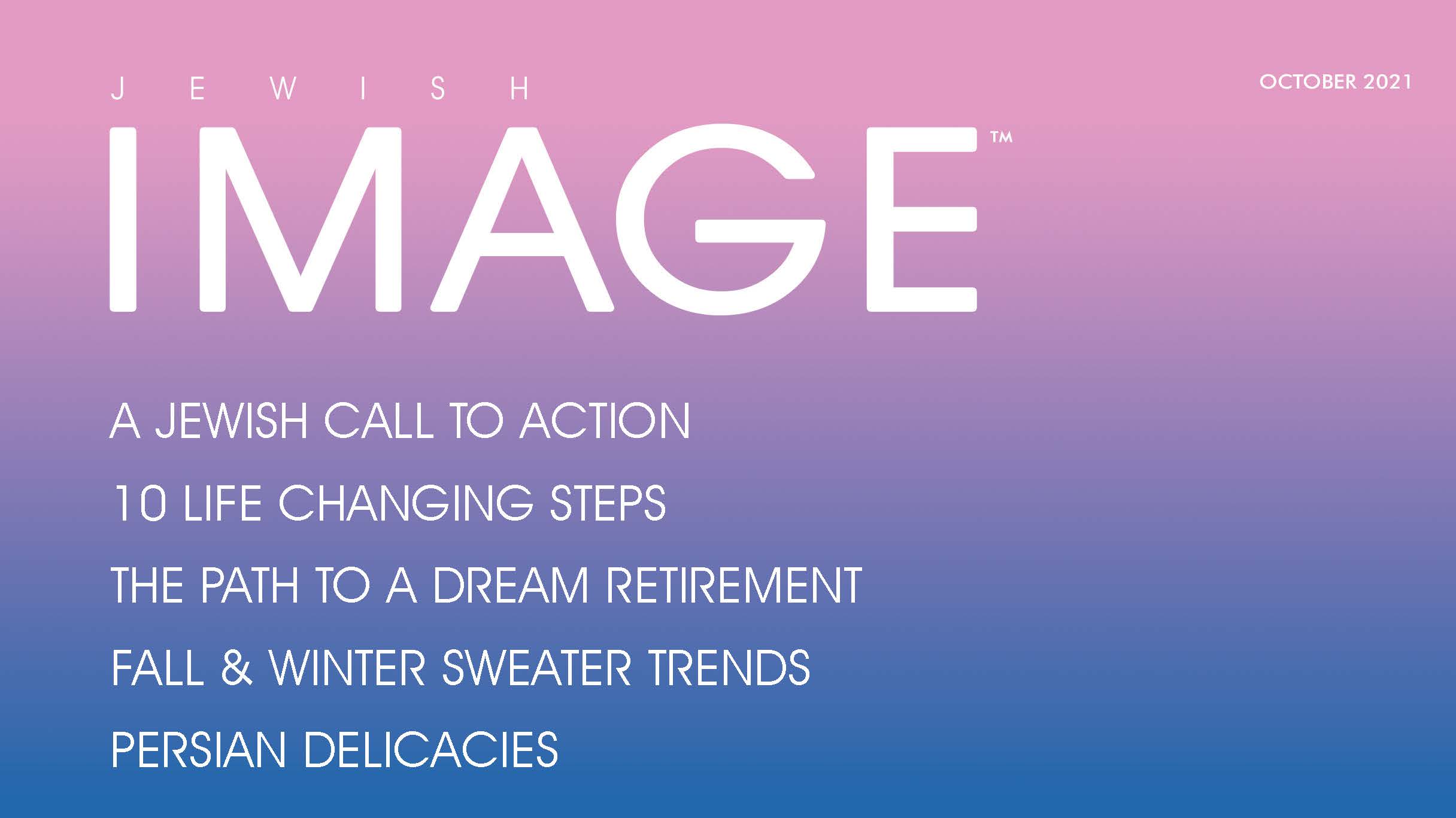MORRIS I. FRANCO CANCER & MEDICAL REFERRAL CENTER
LEAVING NO STONE UNTURNED
SOPHIA FRANCO
IT’S A RANDOM TUESDAY, AND A LUMP APPEARS WHERE IT SHOULDN’T BE, A BRUISE, OR TWO, A HEADACHE THAT JUST WON’T DISAPPEAR. WITH HASHEM’S HELP THAT DAY WILL NEVER COME AND WE WILL NEVER HEAR THE WORD CANCER SPOKEN AGAIN OUT LOUD, BUT IF IT DOES, G-D FORBID, KNOW THAT HELP IS JUST A PHONE CALL AWAY.
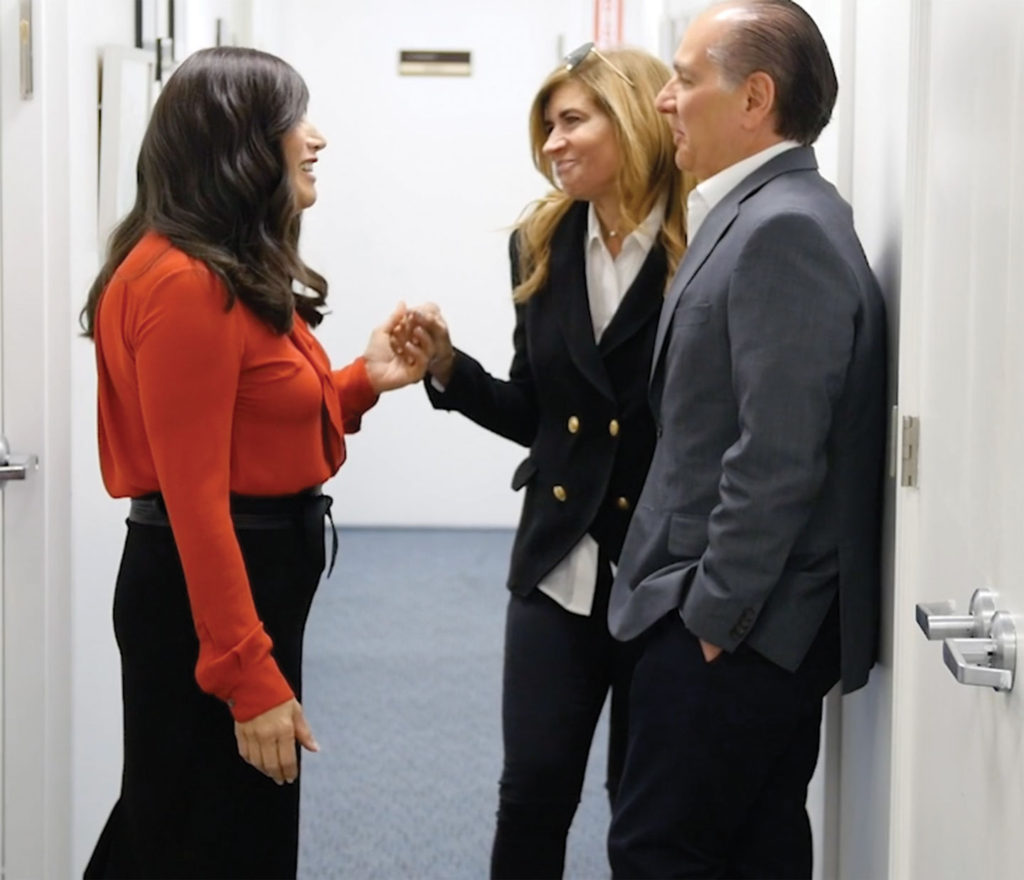
Nancy Sutton, founder and president of the Morris I. Franco Cancer and Referral Center, has been guiding community members through the medical maze for over 28 years, providing endless support, hope and understanding. It started with referrals and help for patients trying to choose the right doctors, hospitals and treatments. She followed up that work—more than a decade ago—with the founding of the Cancer Center, a haven that provides every patient with whatever they might need, before they even know they need it.
Compassionate and nurturing, Nancy and her team’s experience is vast and unmatched. Years of invaluable connections helped garner their relationships with both hospitals and medical professionals, leaving the Cancer Center with a data bank that is complete with the names, and often cell numbers of thousands of doctors, and is constantly updated. This knowledge provides a clear path to success for patients who are probably at the most vulnerable point of their lives.
Renee Zarif, a recipient of that care, explained, “From the point a patient gets diagnosed until the point they find an oncologist, the fear that overtakes them is incomprehensible. I was just 30 years old when I was diagnosed with Hodgkin’s Lymphoma; married nine years. You can just imagine what was going through our minds. There are many medical referral organizations and individuals, but when we got to Nancy, everything changed. The knowledge she has, the doctors on speed-dial, and the personal way in which she shared her thoughts—she was certain, when we were so uncertain. She actually found a way to put us at ease.”
A HAND TO HOLD
Nancy not only guided the Zarifs, but also sat right by their side at the first appointment. Renee continued, “We were so serious and nervous, and she was just calm. When we walked in, she said, ‘let’s get oatmeal and coffee,’ like it was a breakfast date. I was a wreck, and she brought comfort; making everything more tolerable. We talked with the doctor, and once he said that I was going to lose my hair, I tuned out. I couldn’t even hear the rest of what he was saying. Nancy was there, thank G-d, to ask all the right questions; She is the expert, and that doctor was Hashem’s gift to me.
“Nancy and her wonderful staff took care of everything, from transferring files from one hospital to another, to finding the right insurance, to getting a wig ready for me, and getting meals cooked for our family, Nancy’s mind is like a computer. She knows which doctor and which hospital is right for each patient. She’s ten steps ahead, and when you can’t think straight, that’s more valuable than you can ever know.”

Rabbi David Ozeri
“When a community member reaches out to me about a cancer diagnosis, the first person I tell them to call is Nancy Sutton at the MIFCC. I know that they will be getting the best medical guidance and have all their needs taken care of throughout their illness.“
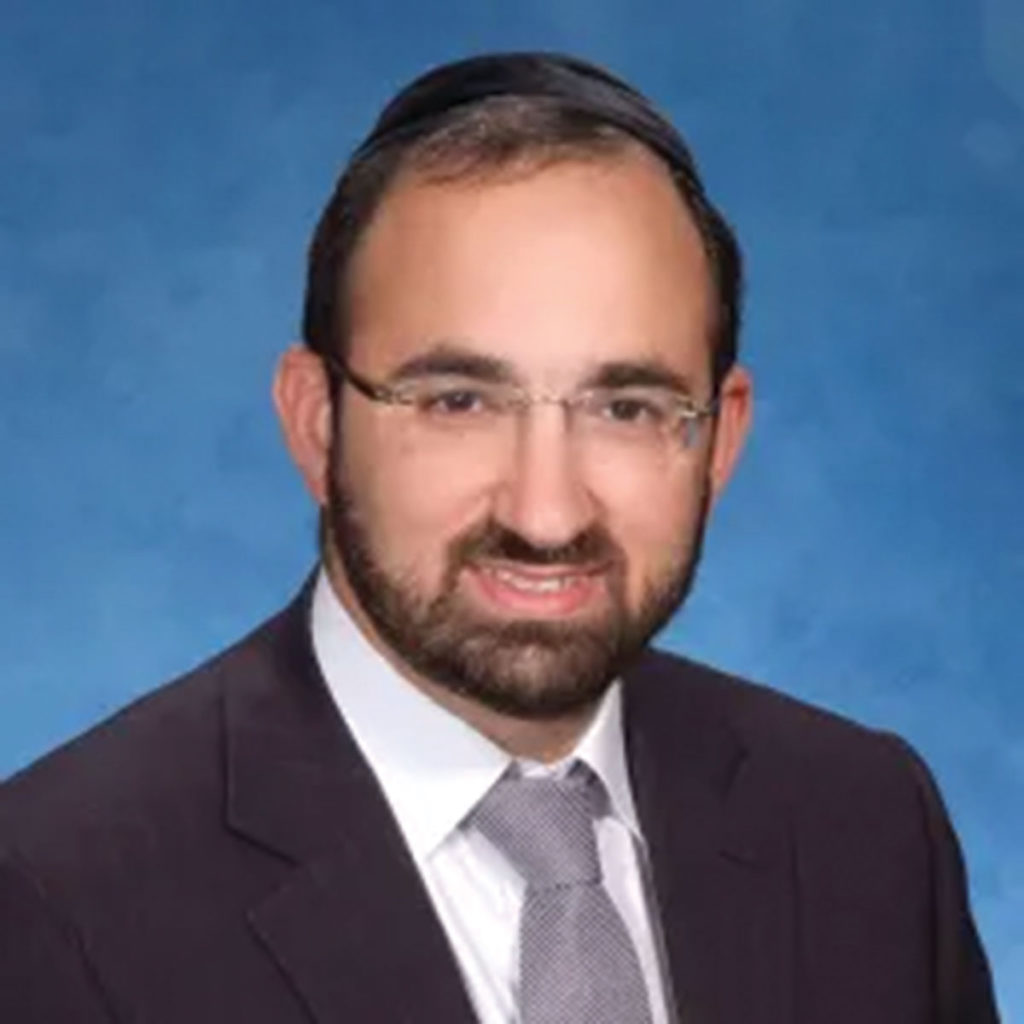
Rabbi Joey Haber
“When someone is sick, there are two parts to their disease, the physical ailment and the emotional pain. The beauty of the Morris I Franco Cancer Center is that you feel like you are in the best hands in the world with both!“
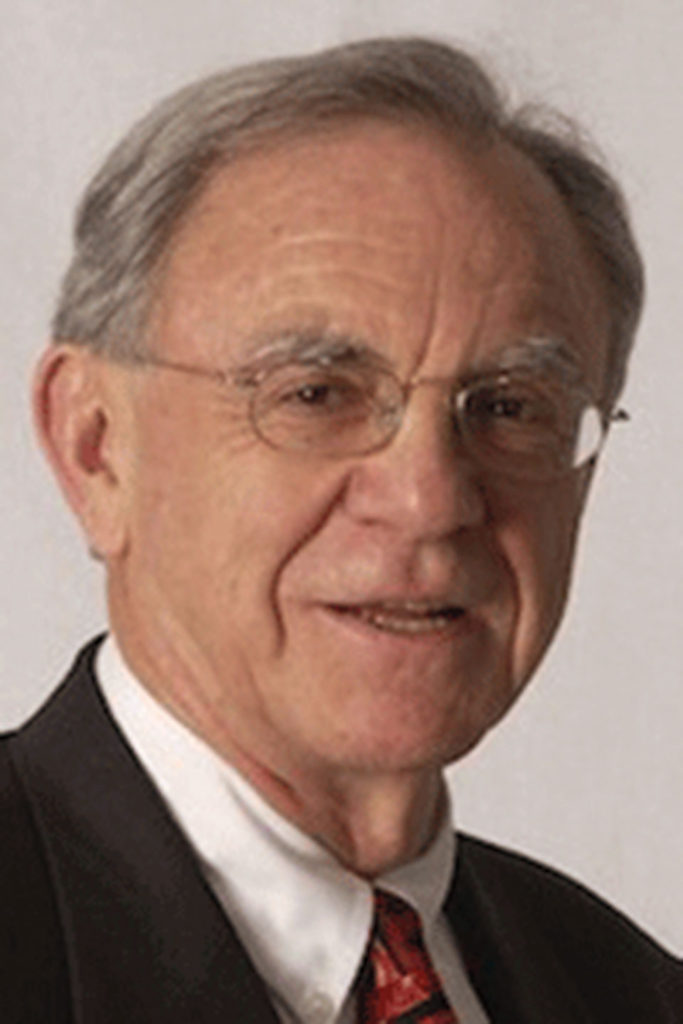
Herbert Pardes M.D.
Executive Vice Chairman of NewYork-Presbyterian Hospital
“On the one hand you can give surgery, radiation, and chemotherapy. But if you pay full attention to the emotional and psychological needs of the individual like you do here at the Morris I Franco Cancer Center, you can expect a 20-30% improvement in the medical outcome.”
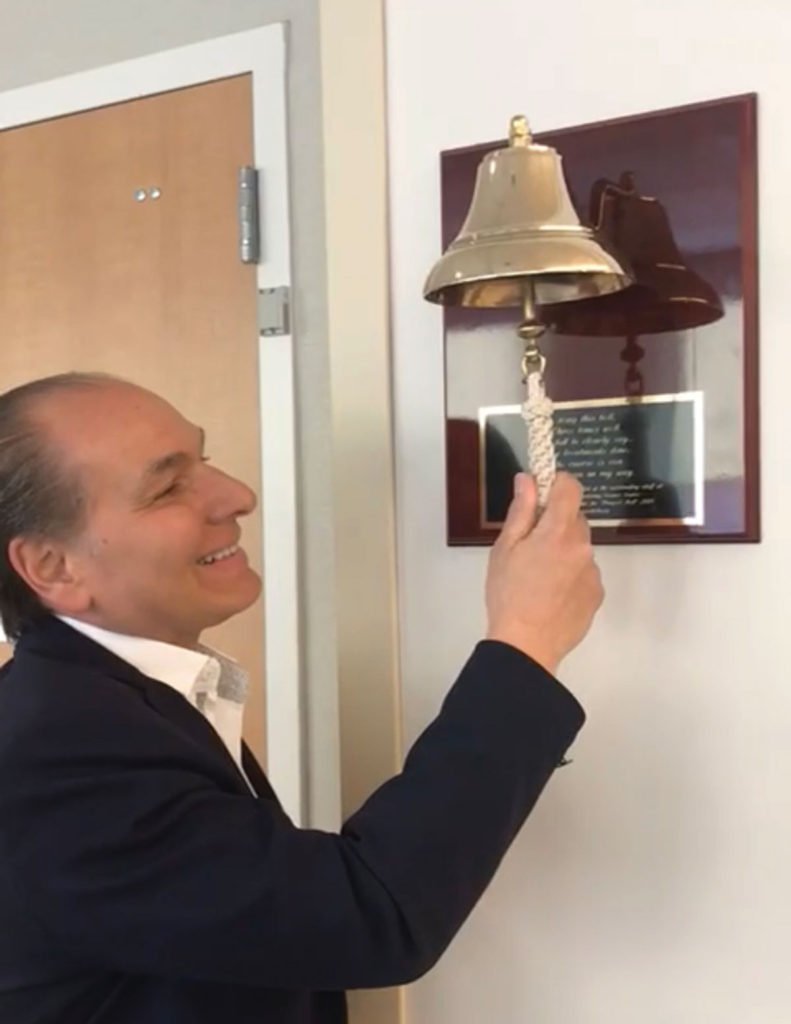
Joey Shamie ringing the bell at Sloan Kettering, symbolizing the end of treatment and the beginning of the road to recovery.
Ralph Tawil is another fighter, one who is just beginning his journey. On the second day of Passover, he told his wife Tami that he was having trouble formulating his words. After the CAT scan, the doctor came to their room with a chair in hand. They knew the news could not be good.
Tami recalled, “The ER doctor sent us to NYU, where a new doctor recommended surgery within a day or two. I did not say the word ‘petrified’ even once. I couldn’t go there. I just put one foot in front of another. But surgery? Is this the right doctor? I knew I needed the expertise only the Cancer Center could offer. Nancy picked up my call while with her grandkids at Universal Studios in Florida. She settled them, and sat down. ‘I’m all yours,’” she said.
“Once I told her the story, she said, ‘This is brain surgery! We need to research this! Give me some time.’ But when she called me back twenty minutes later, she was sure. This is the guy. Do it. Afterwards, Nancy and I were talking twice a day at least. This was the right doctor for the surgery, but we needed a course of action going forward. Nancy told me to come in to the Cancer Center and see dedicated staff member Margie Mathews to collect copies of the scans to send out. I used to volunteer there, so to walk in, and be on the other side as a patient advocate, was surreal. I expected to get the scans and a list of doctors. Instead, Nancy was standing there with a big smile on her face, a hug ready and a muffin in hand. I am good at many things, but doctors—definitely not my forte. Nancy sent our records all over America, and later on, she would usher us into Duke, in North Carolina. ‘Do you need a charter? We can arrange it,’ she asked. ‘What’s a charter?’ I answered. She would have been on the plane with us, if not for COVID. Instead, she joined us via Zoom. The whole time she acted as if we were doing her a favor, by allowing her to help us,”
Joey Shamie explained the magic of the Cancer Center and the love, concern and expertise that they provided when he needed it most. “When Adrienne and I faced the reality of my diagnosis, the first “911” call we made was to Nancy. She was in Israel on vacation, but of course, that didn’t stop her. She treated me like family—a brother—and gave 100% of herself. She made me feel like I had my own personal advisor and confidant, helping me to think things through to the best solution. Aside from that, she showed me first hand that we all love and care about each other in this community.”
CARING CONNECTIONS
Rabbi David Ozeri recalled his first experience with the Cancer Center, ten years ago. “I brought in a patient truly traumatized by her diagnosis and Nancy took her by the hand, introduced her to the staff, and calmed her, in a way I never thought possible. I was amazed that something so complicated could be made so simple, and I never looked back. The patient received the best medical guidance and care available throughout her illness and she understood she was not alone; there was a light at the end of that dark tunnel. This is why the Cancer Center is always my first phone call in these situations.”
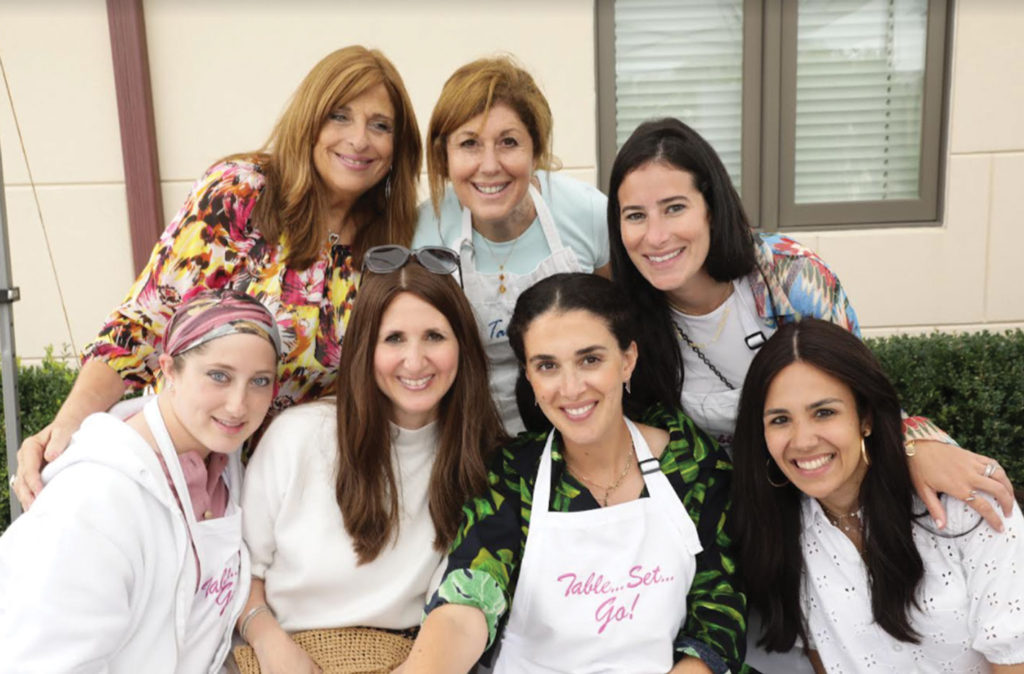
Nancy works in Brooklyn with her partners Sonia Didia, and Debbie Rahmey, and Gerrie Bamira heads up the Deal division. Together, with so many amazing volunteers, they have learned that healing comes not only from top quality medicine, but from people. From the very first meeting they are thinking of what the patient needs now, and later on. Is it counseling? A babysitter? A wig? A manicure or massage? Yoga? Meals for their family? Most helpful seems to be a connection that is made early on with other patients who have had similar experiences.
When Ralph was invited to a men’s group, and dinner, Tami was surprised he was open to it. “He’s so private,” she explained, “but Nancy managed to make him feel he was a part of something, and that she cared. It made him comfortable. I was also invited to a caregiver’s chat and get-together. Am I the caregiver, I asked myself? It’s an odd feeling to be part of a club I didn’t choose, but it’s comforting; it’s about showing you that somebody wants you to smile. It’s knowing we are in this together.”
Joey Shamie agreed, “We all love and care about each other, and have similar issues. We meet and talk on a regular basis. The Cancer Center treats us to beautiful meals, and the finest accommodations. It’s like they have an aerial view of what’s going on; because of their experience and dedication to the cause, they know how important it is for us to feel good. It’s a fantastic way of being able to heal, and help others to heal.”
When Nancy called Renee and said, “We’re doing a mosaics class, I want you to come,” she scoffed. Renee is a physical therapist, and like Tami, had been on the other side of the equation, working at the Cancer Center helping patients. Nancy begged, and she showed up. “I came, because I wanted to show my appreciation for all the Cancer Center was doing for me and my family. Meanwhile, it ended up being an incredible experience. I didn’t know anyone there, but quickly I became very comfortable. Who else could I talk to about the tricks to get through chemo? I laughed because I knew that Nancy had tailored that class to us, so we would lean on each other. It was a support group, incognito. We understood each other perfectly, and that helped.”
THE RED-CARPET TREATMENT
While of course, the Cancer Center is focused on providing the best medical treatment, both physical and mental, there is another facet of care that is tremendously appreciated by the patients and their families. Zarif continued, “Nancy called me a few days before I was supposed to start chemo, and said, ‘I booked a Broadway show for you tonight, and dinner at La Marais.’ My husband was reluctant to accept the extravagance, but I knew it was a treat we could not refuse. That night was the first time in months that we did not talk about my disease, the chemo, or our problems. There were more dinners to follow, on a beach, by a pool, and even hotel stays, but that night was the first, and it had tremendous impact. We reflect on it often.”
Tami recalled a similar story, “At the end of April, Nancy invited Ralph and me to have a five-course dinner set in a lovely backyard in Manhattan Beach—just us and the waiter. She wouldn’t take no for an answer, and it was really magnificent. My husband is a quiet guy; he doesn’t like a fuss to be made, but this was nice. We got a cheesecake on Shavuot, flowers on Shabbat. There’s always something special, and it’s nice to know someone is thinking of us.”
Zarif continued, “Throughout my treatment, I kept asking Nancy, ‘What if it doesn’t work?’ and she would answer, ‘What if it does?’ When I was in the hospital for a month the Cancer Center helped get me a nurse, sent meals to my home every day, and delivered gifts to my kids—which really distracted them, and helped. When I finally came home, they set up a lunch for my husband and me by someone’s pool, and later on, a dinner on the beach. I had many food restrictions then, because of the treatment, but they paid attention to the details. It is a beautiful form of hesed, and it forced us to forget about everything for a little while. I can’t justify how much she helped me. It’s the medical part, yes, and they are unsurpassed; But more so, afterwards, emotionally. I’m self-sufficient, organized, and in control. I’ve been working most of my married life. To say I need help is hard for me. But Nancy and her team understood. They might be the only ones who did.”
YOUR FIRST PHONE CALL
Joey Shamie continued, “Confidentiality is a burden that a cancer patient does not need. I encourage anyone that is going through these issues to open up and share, and accept the warmth and love that is around us. I am blessed with the amazing volunteers at the Cancer Center, my family, friends, and especially my wife Adrienne, who keeps me positive and helps me concentrate on my amazing life. Of course, I wish I never had it, but if I am honest, my experience over the last year has been the most rewarding of my life. Every person, gesture, doctor, nurse and technician has helped steer me towards recovery. From the head of the hospital to the young ladies who take my blood, I cannot thank them enough. Know that everyone is going through it with you. And that everything you put out there in the world, comes right back to you.”
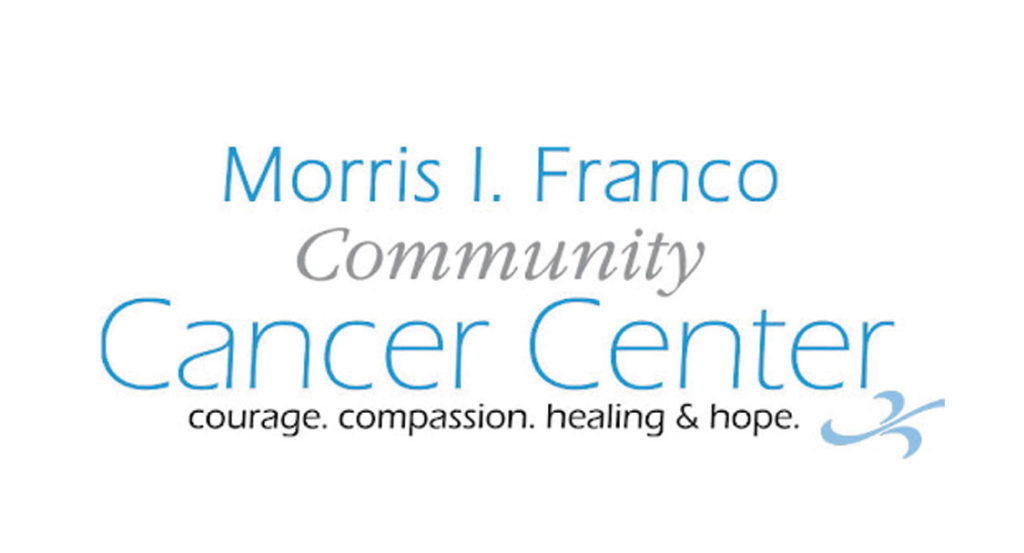
Tami continued, “Ralph said that knowing that I had Nancy to hold my hand, was making his journey easier. Obviously, everyone’s taking care of him; but he was glad to know that someone was tending to me, too. From the beginning Nancy treated us like she had nothing better to do and no one else to worry about, no matter how busy she was. At a time when you’re so vulnerable, it feels good to have someone in your corner who is so experienced and knowledgeable. She continuously makes us feel like she is fully in charge of our care. It’s hard, but she makes it all a little easier.”
Adrienne Shamie said, “We sat in the doctor’s office calmly, awaiting a routine answer of ‘all is well.’ When the doctor gave us the news that my husband had stage 4 prostate cancer, we were shocked. ‘This is the kind of cancer you can die from, not the kind you live with,’ he said. I was sweating, and the whole room began to spin; we did not understand. We spoke with our children, and the next call I made was to Nancy Sutton. She picked up on one ring, from Israel. It was 2 am there. ‘What do you need,’ she asked. I was hysterical. The next day she had us in the very best doctor’s office, in Sloan Kettering. Nancy was by our side 24/7 and held my hand every step of the way. There were many complications, one after the other, but she was our guardian angel. Her expertise, connections and advice helped save my husband’s life.”
Dr. Herbert Pardes, vice chairman of NY Presbyterian Hospital explained, “On the one hand, you can give surgery, radiation and chemotherapy. But if you pay full attention to the emotional and psychological needs of the individual like they do at the Cancer Center, you can expect better overall results. It is all interconnected.” The Morris I. Franco Cancer and Referral Center helps their patients with anything and everything imaginable, going above and beyond, over and over again. Leaving no stone unturned, they are one of a kind; Their goal is to get their patients well, and they are very, very good at it.“
For more information about the Cancer Center and medical referrals, call (718) 787-1800 or visit us at nycancercenter.org.
Sophia Franco has been feeding her love of reading and writing for as long as she can remember through poetry, community journalism, and songwriting. She has written many songs.


